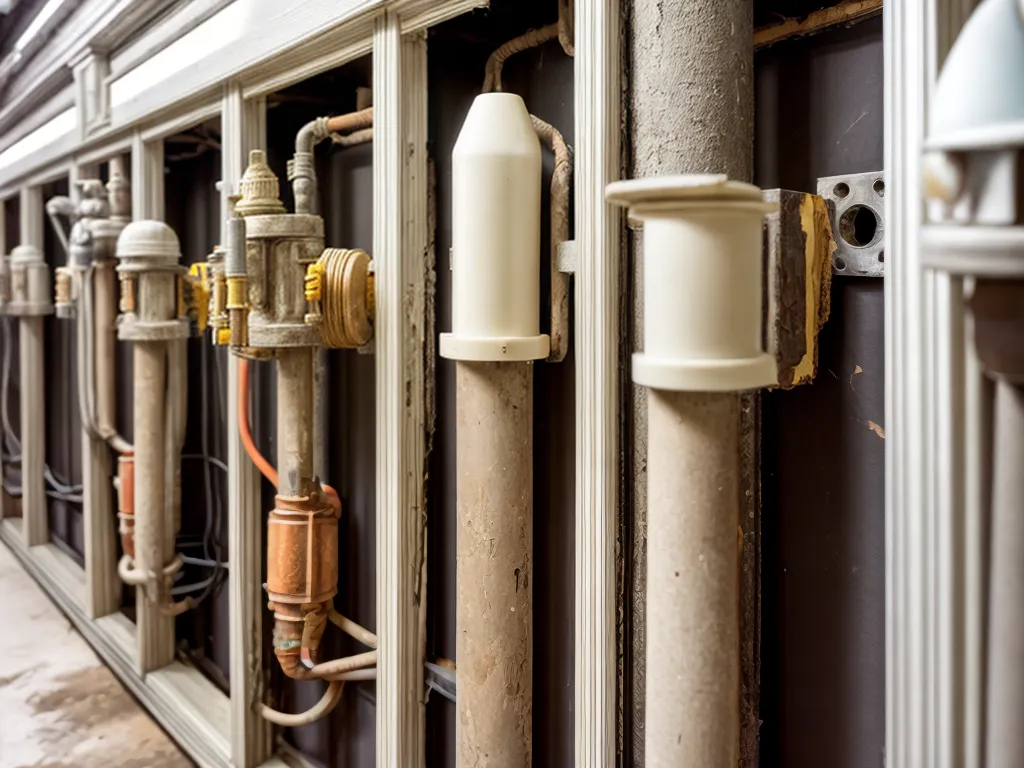
Low-Cost Methods for Replacing Old Knob and Tube Wiring in Historic Commercial Buildings
Assessing the Need for Rewiring
I recently learned that the historic commercial building I own still has original knob and tube wiring. While this type of wiring was common in the early 20th century, it can be a fire hazard today. As the owner of a historic building, I need to balance safety updates with preserving the building's original character. Replacing all the wiring could be incredibly disruptive and expensive. Therefore, I am exploring some low-cost methods for replacing or upgrading the wiring in phases.
First, I had an electrician inspect the building to identify all locations with knob and tube wiring and assess its condition. He found that much of it is still in good shape, though some circuits are outdated or deteriorated. This gave me a roadmap for which areas should be prioritized for rewiring. I also had him evaluate where we could splice in new wiring without destroying historic materials.
Using Existing Infrastructure to Limit Demolition
One of the biggest expenses in rewiring is opening up walls for access. Since I want to avoid excessively damaging the historic plaster, woodwork, and masonry, I asked my electrician about running new wires through existing conduits and pathways. He explained that we may be able to disconnect the old knob and tube and use its tubes as a sleeve to pull new wires. Likewise, some sections run through voids in the masonry, allowing us to fish new cables without removing historic materials.
We can also take advantage of existing infrastructure like junction boxes and outlets to limit demolition. I plan to remove and replace compromised sections of knob and tube between these connection points, splicing in new wiring in the process. This will avoid the need to fully rewire entire circuits.
Prioritizing Hazardous Areas First
Since rewiring the entire building would be incredibly disruptive and costly right now, I am taking a phased approach. My electrician recommended prioritizing sections where the knob and tube wiring poses safety risks. This includes places where insulation has deteriorated, wires have insulation cracks, or circuits are overloaded. Addressing these hazardous areas first will get us the most bang for our buck in improving safety.
We decided to start with running new wiring to the basement and attic, where exposed knob and tube was in poor condition. Next we will rewire locations with imminent failures like junction boxes with cracked ceramic. As budget allows over time, we will methodically update more circuits. By carefully documenting conditions and targeting hazardous areas first, I can make the most impact without fully rewiring everything immediately.
Using Less Disruptive Surface-Mounted Raceways
Running all new wiring inside walls would require excessive demolition and restoration in our historic building. So my electrician suggested using surface-mounted wiring raceways in some areas instead. Metal or plastic raceway channels can be attached to baseboards, ceilings, and walls to externally route cables to new outlets and fixtures.
While not as aesthetically appealing, raceways allow us to avoid destroying historic finishes. We plan to use them in secondary spaces like the basement and rear offices. The electrician will paint them to blend with the surrounding surfaces. Raceways give us a minimally invasive option for getting power where we need it without harming historic character.
Integrating New Technologies for Improved Safety
While rewiring, I want to add some modern electrical features to improve safety. My electrician recommended installing arc fault circuit interrupter (AFCI) outlets, which detect dangerous arcs that could cause fires. Though a bit pricier, AFCIs provide vital protection.
We will also add grounded outlets with modern 3-prong receptacles as we rewire rooms. Not only do these accommodate modern appliances and electronics, but they offer superior shock protection compared to outdated ungrounded 2-prong outlets. I realize future upgrades will be necessary, but for now I am focused on targeted upgrades that maximize safety.
Conclusion
Rewiring a historic commercial building with knob and tube presents challenges, but there are ways to upgrade wiring safely without destroying the structure’s historic fabric. By taking a phased approach, using existing infrastructure strategically, prioritizing hazardous areas first, and incorporating modern safety technologies, I can make incremental upgrades over time that keep my building safe without compromising its historic character and materials. It will be a long process, but well worth it.